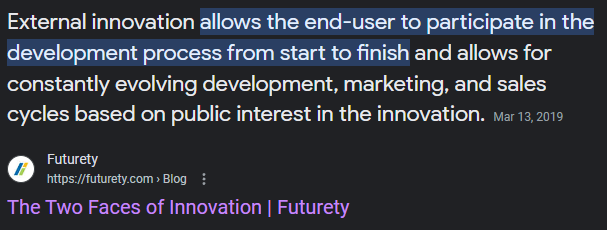How often do you search a query in Google and actually click a URL to learn more? Likely you find a solution to your question without clicking into any websites. Zero-click searches allow users to receive the information they need without requiring them to click through additional websites.
Zero-click searches continue to increase as users want quick and efficient answers to their queries. In fact, zero-click searches rose 65% in 2020. This begs the importance of crafting a zero-click strategy in order to boost your SEO efforts and rank in front of your ideal audience.
When it comes to producing high performing SEO, you need to consider how your particular audience searches. How often do they use Google? Why do they use Google? Understanding these questions will provide the foundation for building your SEO and zero-click strategies.
What does a zero-click search look like?
We know that most users desire a quick answer to their queries and Google provides tools that address this need. We know that people typically do not scroll past the first page of results, nor do they want to click through a website to find the answer they need.
Some of Google’s zero-click tools include:
- Featured Snippets
- “People also ask” box
- Knowledge panel
- Local pack
Featured Snippets
Featured snippets attempt to answer queries directly on the SERP. Google takes an indexed section from your webpage and displays it so searchers can read without physically clicking on the URL and searching the landing page.
Google typically will display definitions, tables and lists from within your website. Searchers can easily read this type of content and receive an answer to their query quickly. For example, Futurety’s blog post, The two faces of innovation, is the featured snippet for the search query, external innovation.

Because featured snippets appear at the top of the SERP, some consider this as “Position 0.”
“People Also Ask” Box
In addition to featured snippets, searches use the “People also ask” box to find answers to their queries. Google has access to billions of searches and holds a lot of knowledge in user behavior. They use this knowledge to display other queries and responses that they believe the searcher may be interested in.
While this SERP feature does require searchers to click a drop down, we would still consider this a zero-click search.
Knowledge Panel
For brands with enough authority, they can request a knowledge panel. A Google knowledge panel serves relevant information to answer a query on the side of the SERP. Users can simply look to the knowledge panel to receive an answer in a glance.
You can make edits to the information that displays in the knowledge panel, allowing you to have more control over how you show up in the SERP.
Local Pack
The local map helps companies that have a physical location and want to drive consumers to that location. You can control images, business hours, phone numbers and your address to display for certain queries.
In addition to Google reviews, local packs can influence consumers looking for directions or the appropriate phone number to get a hold of your business.
How do I include zero click search into my content strategy?
For businesses, implementing a zero-click search strategy can help to increase visibility, establish authority and potentially drive more traffic to their website. Now, let us explore how to include zero-click search into your content strategy and effectively optimize your content for this type of search result.
 Create high-quality content
Create high-quality content
This is the most important thing you can do to improve your chances of appearing in zero-click searches. Make sure your content is well-written, informative and up-to-date.
Creating engaging content keeps your audience coming back for more, increasing retention. In addition, high-quality content is shared and recommended more often, increasing reach and exposure.
Optimize your content for users
It is important to use relevant keywords throughout your content and make sure your pages are structured in a way that makes sense to search engines.
However, creating content that is user focused can improve the user experience of your site, attract and retain users, build trust and credibility, drive traffic, generate leads and sales and build relationships with your users.
Create content that answers questions
This goes back to creating content with the user in mind. People use search engines to ask questions all the time, so use that data to find out what questions you should be answering. If you can create content that answers these questions, you’re more likely to appear in zero-click searches.
Use schema markup
Schema code markup, AKA, structured data, helps Google and other search engines understand what your content is. This is one of the simplest ways to have some control over your ranking in the SERP. It isn’t a guarantee, but you will rank higher than a competitor who doesn’t have schema code.
Creating a zero-click search strategy is beneficial for certain types of websites, especially those that provide quick answers to common questions or information that can be easily displayed in a featured snippet.
Futurety Digital is here to guide you through the zero click search strategy process. Schedule a free consultation today!
